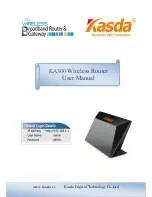
Command Line Interface (CLI)
C
This section describes the AP’s Command Line (CLI) Interface. CLI commands can be used to initialize, configure, and
manage the Access Point.
–
CLI commands may be entered in real time through a keyboard or submitted with CLI scripts.
–
The CLI is available through both the Serial Port interface and over the Ethernet interface using Telnet.
NOTE
All CLI commands and parameters are case-sensitive.
•
•
Command Line Interface (CLI) Variations
•
•
•
Configuring the AP using CLI commands
•
Set Basic Configuration Parameters using CLI Commands
•
•
•
General Notes
Prerequisite Skills and Knowledge
To use this document effectively, you should have a working knowledge of Local Area Networking (LAN) concepts,
network access infrastructures, and client-server relationships. In addition, you should be familiar with software setup
procedures for typical network operating systems and servers.
Notation Conventions
• Computer prompts are shown as constant width type. For example:
[Device-Name]>
•
Information that you input as shown is displayed in bold constant width type. For example:
[Device name]>
set ipaddr 10.0.0.12
•
The names of keyboard keys, software buttons, and field names are displayed in bold type. For example: Click the
Configure
button.
• Screen names are displayed in bold italics. For example, the
System Status
screen.
Important Terminology
•
Configuration Files - Database files containing the current Access Point configuration. Configuration items include
the IP Address and other network-specific values. Config files may be downloaded to the Access Point or uploaded
for backup or troubleshooting.
•
Download vs. Upload - Downloads transfer files to the Access Point. Uploads transfer files from the Access Point.
The TFTP server performs file transfers in both directions.
•
Group - A logical collection of network parameter information. For example, the System Group is composed of
several related parameters. Groups can also contain Tables. All items for a given Group can be displayed with a
show <Group>
CLI Command.
C-1
















































